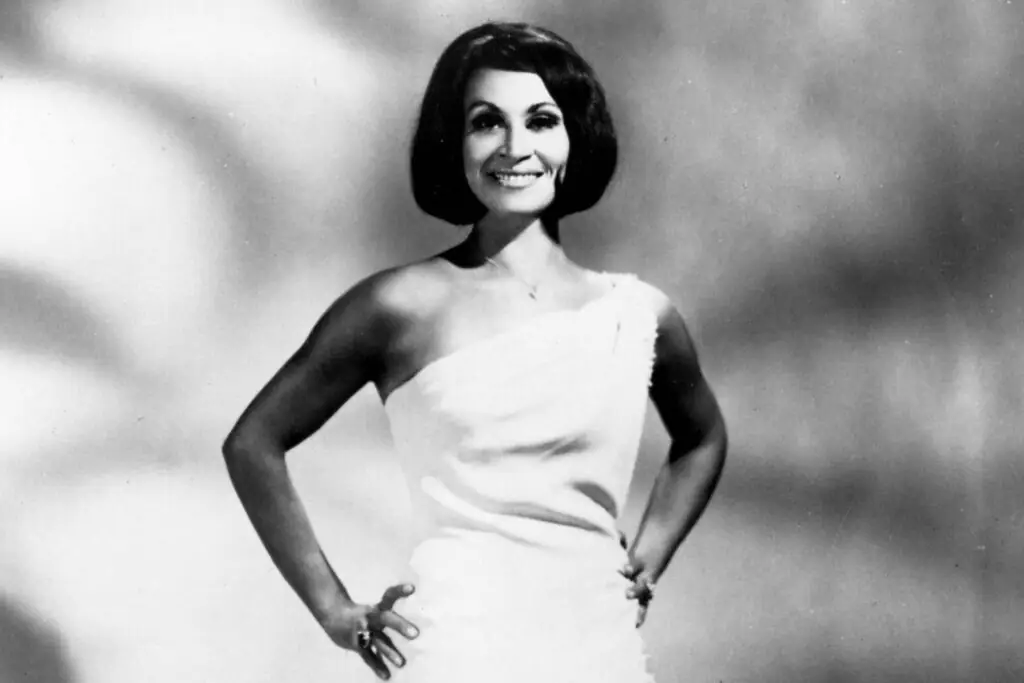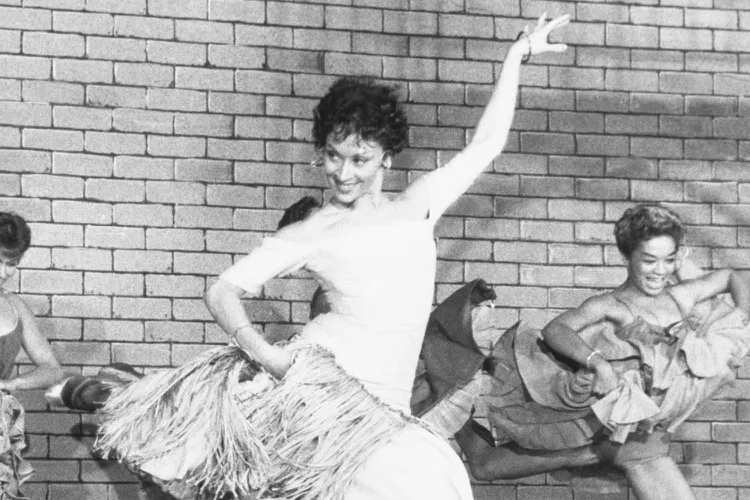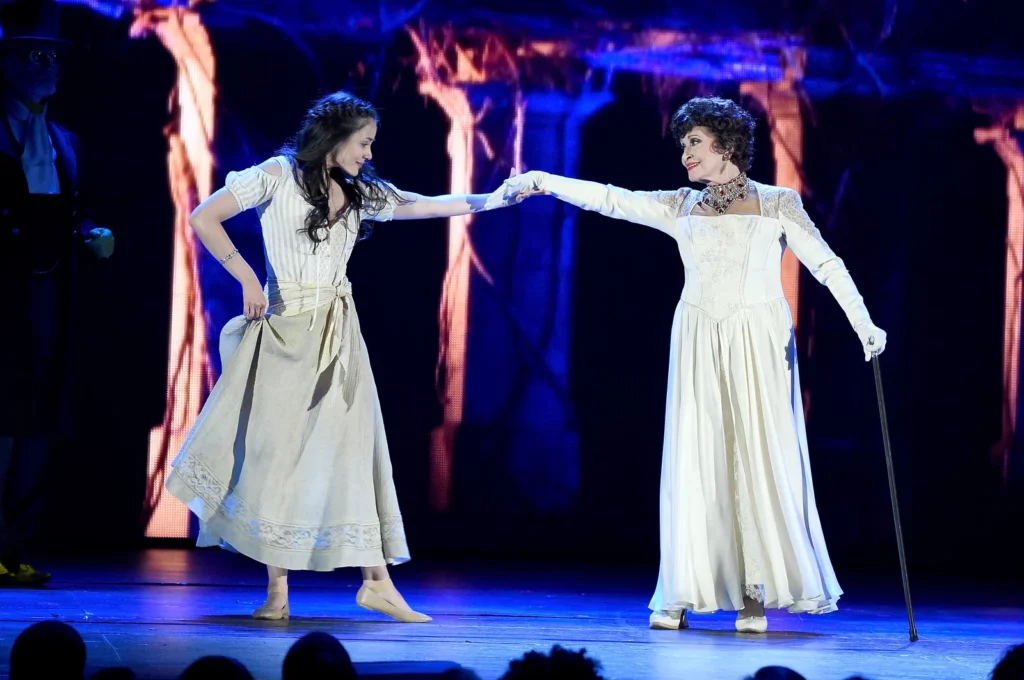In a touching tribute, NPR recently shared the news of the passing of Broadway icon Chita Rivera. The legendary performer, who graced the stage in over 20 Broadway musicals across six decades, died at the age of 91. Rivera’s daughter, Lisa Mordente, confirmed her passing. As a three-time Tony Award winner, Rivera left an indelible mark on the world of theatre, creating unforgettable roles in classics like “West Side Story,” “Bye Bye Birdie,” “Chicago,” and “Kiss of the Spiderwoman.”

✅ AI Essay Writer ✅ AI Detector ✅ Plagchecker ✅ Paraphraser
✅ Summarizer ✅ Citation Generator
Chita Rivera was more than just a performer; she embodied the essence of Broadway. Laurence Maslon, co-producer of the 2004 PBS series “Broadway: The American Musical,” remarked,
“She was everything Broadway was meant to be. Spontaneous, compelling, and talented as hell for decades. Once you saw her, you never forgot her.”
Despite her iconic status on Broadway, Rivera’s beginnings were humble and unexpected. Born Dolores Conchita Figueroa del Rivero in Washington, D.C., she initially embraced a tomboy lifestyle. It was only after her mother enrolled her in ballet to channel her energy that Rivera discovered her passion for dance. She recounted in a Screen Actors Guild Foundation interview, “I am very grateful [for ballet class].”

Rivera’s journey to Broadway was a twist of fate. While accompanying a friend to an audition for “Call Me Madam,” Rivera ended up being the one cast in the show. This pivotal moment marked the end of her ballet career and the beginning of her Broadway legacy. Her breakthrough role as Anita in “West Side Story” in 1957, with a score by Leonard Bernstein and Stephen Sondheim, showcased not only her dynamic dancing but also her acting and singing talents.

Reflecting on her role in “West Side Story,” Rivera shared with NPR in 2007, “Hearing ‘America’ was just mind-boggling. It was such a challenge, and being Latin, it was a welcoming sound.” She vividly remembered Bernstein teaching her the score, despite her initial doubts about her singing abilities. Laurence Maslon highlighted Rivera’s versatility, saying,
“She was the first great triple threat. Broadway needed performers who could sing, act, and dance exceptionally well, and Chita was the epitome of that.”
Rivera’s career had its ups and downs, including a severe taxi accident in 1986 that shattered her left leg. Defying doctors’ predictions, she continued to perform, albeit differently. “I don’t do flying splits anymore,” Rivera admitted in a 2005 NPR interview. “But you know what? I don’t want to.”

Her unwavering dedication to the stage earned her numerous accolades, including several Tony Awards, a Kennedy Center honor, and a Presidential Medal of Freedom. Maslon summed up her legacy:
“That’s why they’re called Broadway legends. You had to see them live to experience their magic in its truest form.”
Chita Rivera’s passing marks the end of an era, but her legacy as a Broadway legend, a pioneer of the triple-threat performer, and an inspiration to many, will undoubtedly live on.
Pay Tribute to the Biggest Broadway Star Discussing These Topics
As we’ve just revisited the inspiring journey of Chita Rivera, a true Broadway icon, it’s clear how much her incredible story resonates with us all. Her life wasn’t just about dazzling performances; it was a reflection of the spirit and evolution of Broadway itself. Now, as we move from admiring her life’s story, let’s dive deeper. For those of you passionate about theater, or simply intrigued by Rivera’s extraordinary impact, we have some thought-provoking essay topics lined up. These discussions are not just about exploring Rivera’s legacy, but also about understanding the broader canvas of Broadway, where she shone so brightly. So, let’s keep the conversation going and dig into these fascinating aspects of a world where Chita Rivera was not just a star, but a trailblazer.
| Essay Topic | Outline |
|---|---|
| The Evolution of Broadway Through Chita Rivera’s Career | 1. Introduction to Broadway’s history 2. Chita Rivera’s early life and introduction to Broadway 3. Major roles and contributions 4. Changes in Broadway mirrored in Rivera’s career |
| Chita Rivera: The Embodiment of the Broadway Triple Threat | 1. Definition of a Broadway triple threat 2. Analysis of Rivera’s skills in singing, acting, and dancing 3. Key performances exemplifying her triple threat status |
| The Impact of ‘West Side Story’ on Broadway and Chita Rivera’s Career | 1. Background of ‘West Side Story’ 2. Rivera’s role and performance in the musical 3. Influence of the musical on Rivera’s career and Broadway |
| Overcoming Adversity: Chita Rivera’s Comeback After Her Accident | 1. Details of Rivera’s accident 2. Challenges in her recovery and return to Broadway 3. Analysis of her post-accident performances and their significance |
| Chita Rivera’s Influence on the Representation of Latinx Artists on Broadway | 1. Historical context of Latinx representation on Broadway 2. Rivera’s role in breaking barriers 3. Influence on future Latinx artists and diversity in theatre |
| A Comparative Study: Chita Rivera and Other Broadway Legends | 1. Comparison of Rivera with other Broadway legends 2. Analysis of their contributions and styles 3. Rivera’s unique place in Broadway history |
| The Role of Dance in Chita Rivera’s Broadway Performances | 1. The significance of dance in Broadway shows 2. Analysis of Rivera’s dance performances 3. Impact of her dance style on future Broadway productions |
| The Legacy of Chita Rivera in Contemporary Broadway Productions | 1. Rivera’s lasting influence on Broadway 2. Examples of her influence in contemporary productions 3. The future of Broadway and Rivera’s legacy |
Follow us on Reddit for more insights and updates.





Comments (0)
Welcome to A*Help comments!
We’re all about debate and discussion at A*Help.
We value the diverse opinions of users, so you may find points of view that you don’t agree with. And that’s cool. However, there are certain things we’re not OK with: attempts to manipulate our data in any way, for example, or the posting of discriminative, offensive, hateful, or disparaging material.